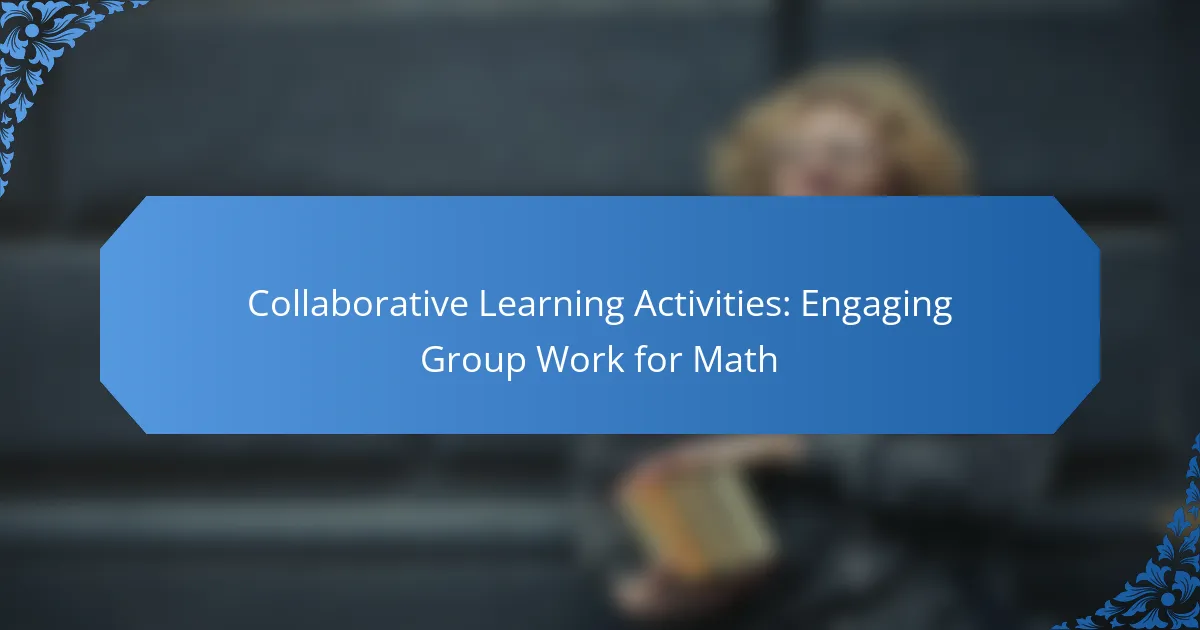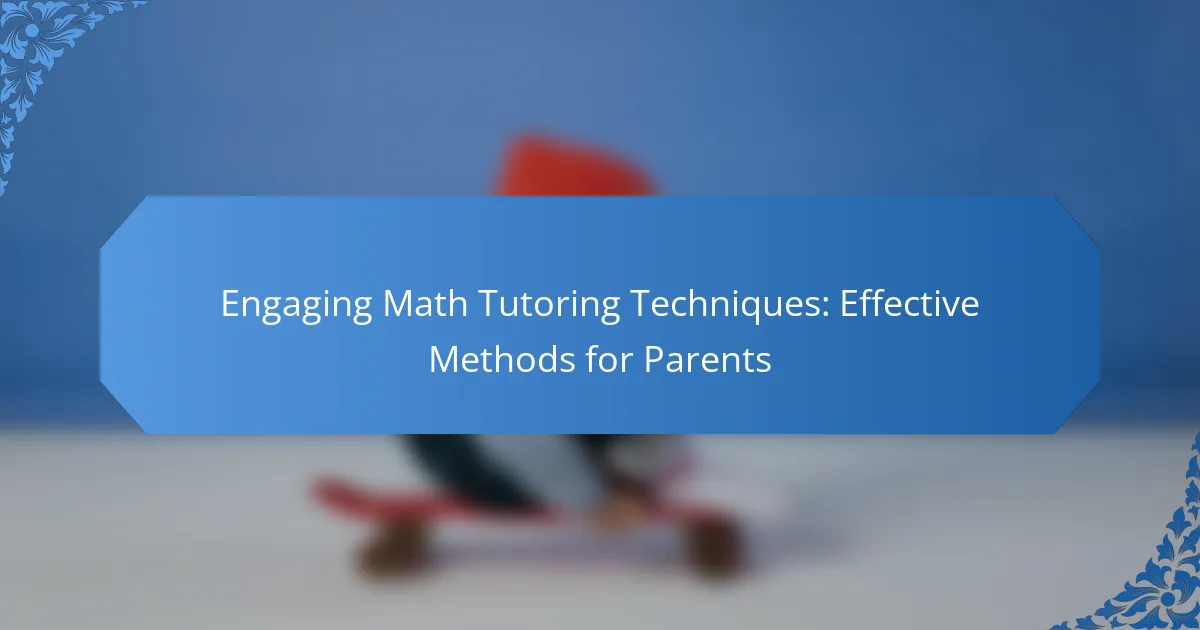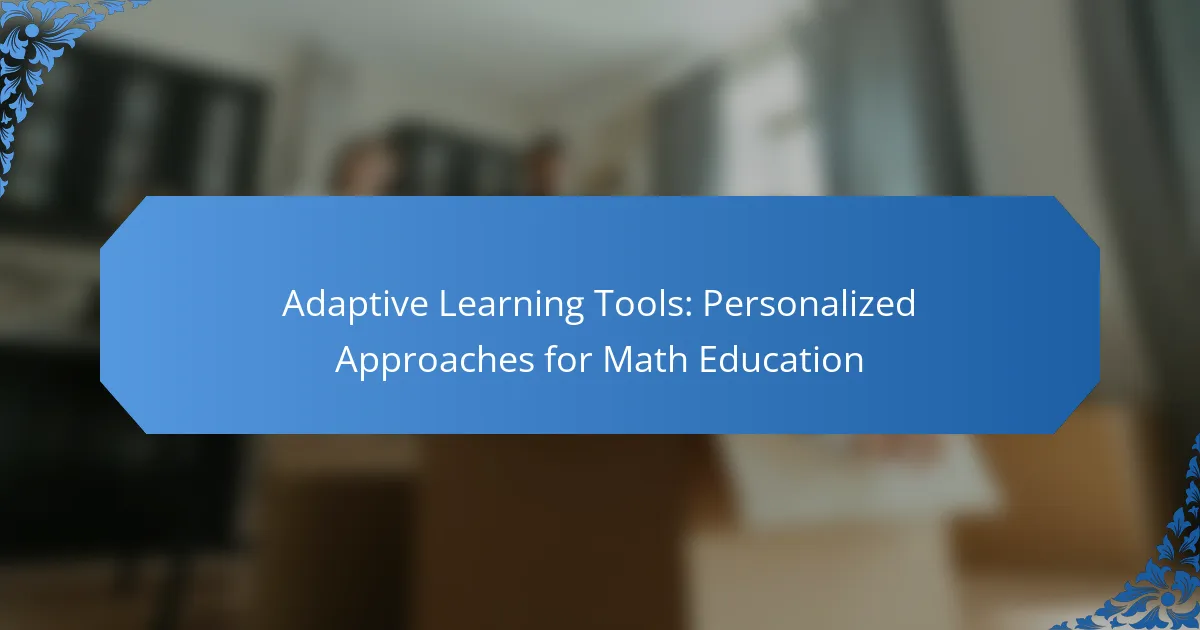Collaborative learning activities in math provide students with opportunities to work together, enhancing their grasp of mathematical concepts through teamwork. These engaging group work strategies foster communication and critical thinking, making the learning process more interactive and enjoyable. By promoting active participation, these activities not only deepen understanding but also prepare students for real-world applications of math.
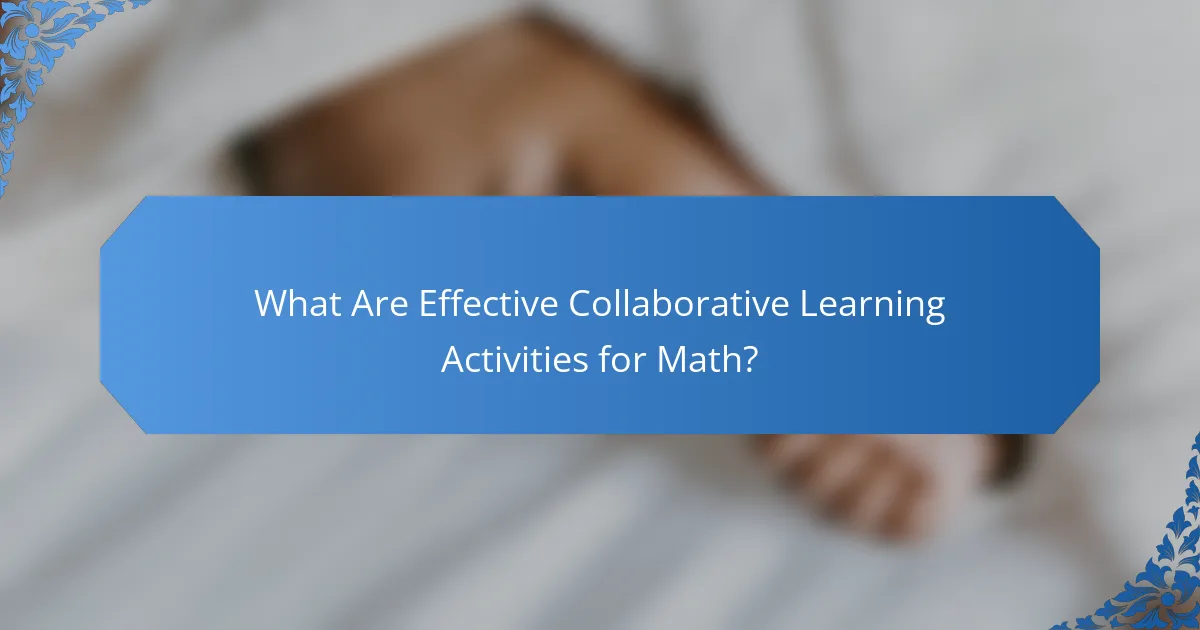
What Are Effective Collaborative Learning Activities for Math?
Effective collaborative learning activities for math engage students in teamwork while enhancing their understanding of mathematical concepts. These activities promote communication, critical thinking, and problem-solving skills, making math more interactive and enjoyable.
Math Jigsaw
Math Jigsaw is a collaborative activity where students work in groups to solve different parts of a larger problem. Each student becomes an expert on their assigned section, then comes together with their group to share insights and piece together the complete solution.
To implement Math Jigsaw, divide a complex problem into manageable parts. Assign each part to a different student or subgroup, ensuring they understand their section thoroughly. Afterward, facilitate a group discussion to combine their findings into a comprehensive solution.
Peer Teaching
Peer Teaching involves students teaching each other specific math concepts, fostering a deeper understanding through explanation. This method allows students to articulate their thought processes and clarify misunderstandings among peers.
To use Peer Teaching effectively, pair students with varying levels of understanding. Encourage the more knowledgeable student to explain concepts and solve problems while the other listens and asks questions. This reciprocal teaching can enhance both students’ comprehension.
Math Stations
Math Stations are designated areas where students engage in different math activities or problems. This setup allows for hands-on learning and encourages movement, which can increase engagement and retention of mathematical concepts.
Set up several stations, each focusing on a different skill or topic. Students rotate through the stations, spending a set amount of time at each. Consider using a timer and providing clear instructions at each station to keep the activity structured and focused.
Group Problem Solving
Group Problem Solving tasks students with collaboratively tackling a complex math problem. This approach encourages discussion, diverse perspectives, and collective reasoning, leading to a deeper understanding of the material.
Present a challenging problem and allow groups to brainstorm solutions. Encourage them to discuss their thought processes and strategies openly. Monitor the groups and provide guidance as needed, ensuring all voices are heard and valued during the problem-solving process.
Math Debates
Math Debates involve students arguing for or against a particular mathematical concept or solution. This activity promotes critical thinking and helps students articulate their reasoning while considering opposing viewpoints.
To organize a Math Debate, select a relevant topic or problem. Divide students into teams, assigning each a position to defend. Allow time for research and preparation, then facilitate the debate, encouraging respectful discourse and evidence-based arguments.
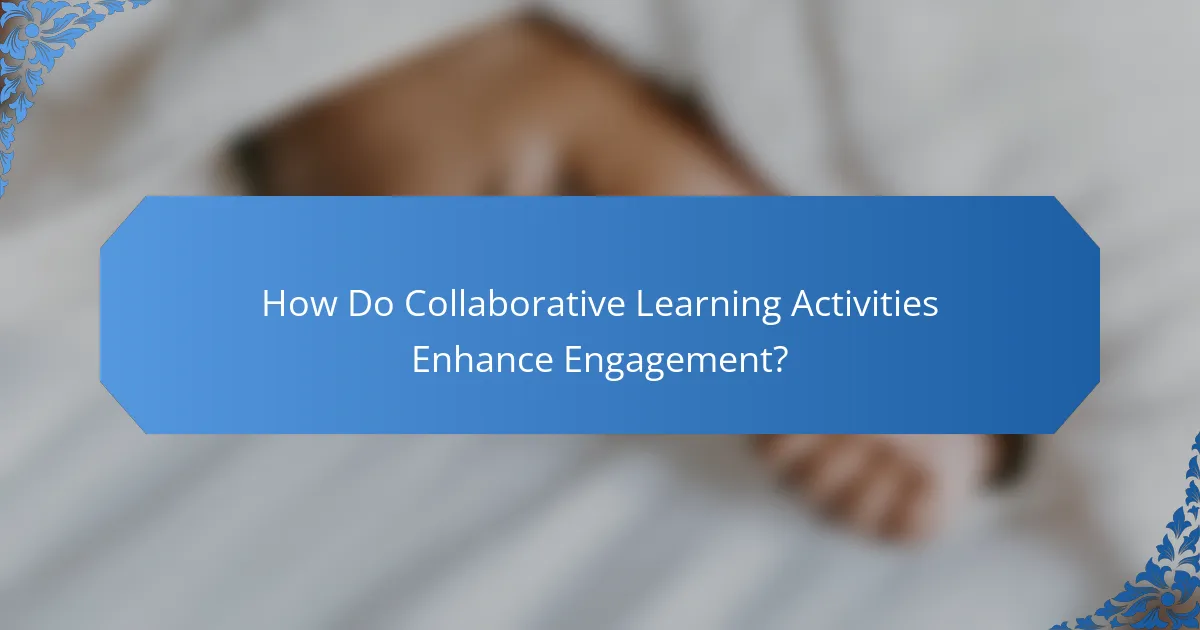
How Do Collaborative Learning Activities Enhance Engagement?
Collaborative learning activities significantly boost student engagement by fostering active participation and interaction among peers. These group work strategies create an environment where learners feel more invested in their education, leading to deeper understanding and retention of mathematical concepts.
Increased Participation
Collaborative learning encourages all students to take part, as group dynamics often motivate individuals who might otherwise remain passive. When students work together on math problems, they share ideas and solutions, which can lead to increased confidence and willingness to contribute.
To maximize participation, consider assigning specific roles within groups, such as facilitator, note-taker, or presenter. This structure ensures that every member has a defined responsibility, promoting accountability and engagement.
Improved Communication Skills
Working in groups enhances students’ communication skills as they articulate their thoughts and listen to others. This exchange of ideas is crucial in math, where explaining reasoning can clarify concepts for both the speaker and the listener.
Encourage students to practice active listening and constructive feedback during group discussions. Simple guidelines, such as summarizing a peer’s point before responding, can improve the quality of communication and foster a supportive learning environment.
Stronger Critical Thinking
Collaborative activities challenge students to think critically as they analyze different approaches to solving math problems. Engaging with diverse perspectives helps them develop problem-solving skills and encourages deeper exploration of mathematical concepts.
To enhance critical thinking, present students with open-ended problems that require collaboration to solve. This approach not only promotes discussion but also allows students to evaluate multiple strategies and outcomes, reinforcing their analytical abilities.
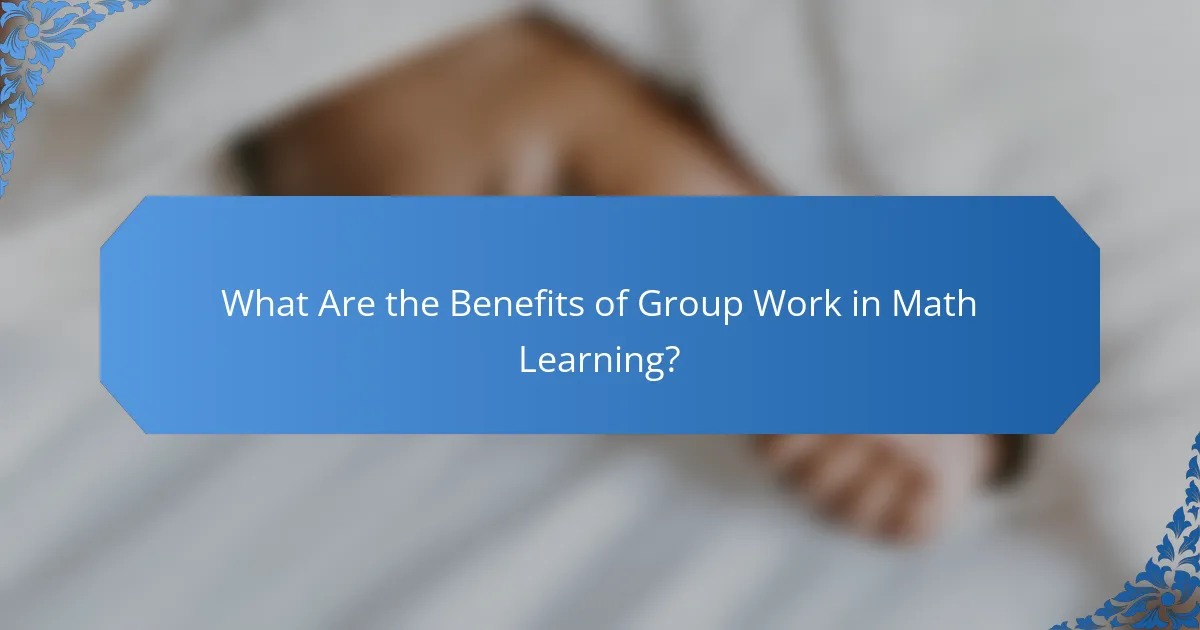
What Are the Benefits of Group Work in Math Learning?
Group work in math learning enhances students’ understanding of concepts, fosters social skills, and prepares them for real-world applications. Collaborative activities encourage peer interaction, which can lead to deeper comprehension and retention of mathematical principles.
Enhanced Understanding
Working in groups allows students to discuss and explain mathematical concepts to one another, facilitating a deeper understanding. When peers articulate their thought processes, it often helps clarify complex ideas and reveals different problem-solving approaches.
For example, students might work together on solving equations, where one student explains their method while others ask questions or suggest alternatives. This exchange can lead to a more robust grasp of the material than solitary study.
Development of Social Skills
Group work cultivates essential social skills such as communication, teamwork, and conflict resolution. Students learn to express their ideas clearly and listen to others, which are vital skills both in and out of the classroom.
In a math group project, for instance, students must negotiate roles, share responsibilities, and provide constructive feedback. These interactions not only enhance their mathematical abilities but also prepare them for collaborative environments in future educational and professional settings.
Preparation for Real-World Applications
Collaborative math activities mimic real-world scenarios where teamwork and problem-solving are crucial. By engaging in group work, students gain experience in tackling problems collectively, much like they would in a workplace setting.
For instance, when working on a project that requires data analysis, students can simulate a business environment where they must analyze figures, interpret results, and present findings as a team. This practical experience helps bridge the gap between academic concepts and their application in everyday life.
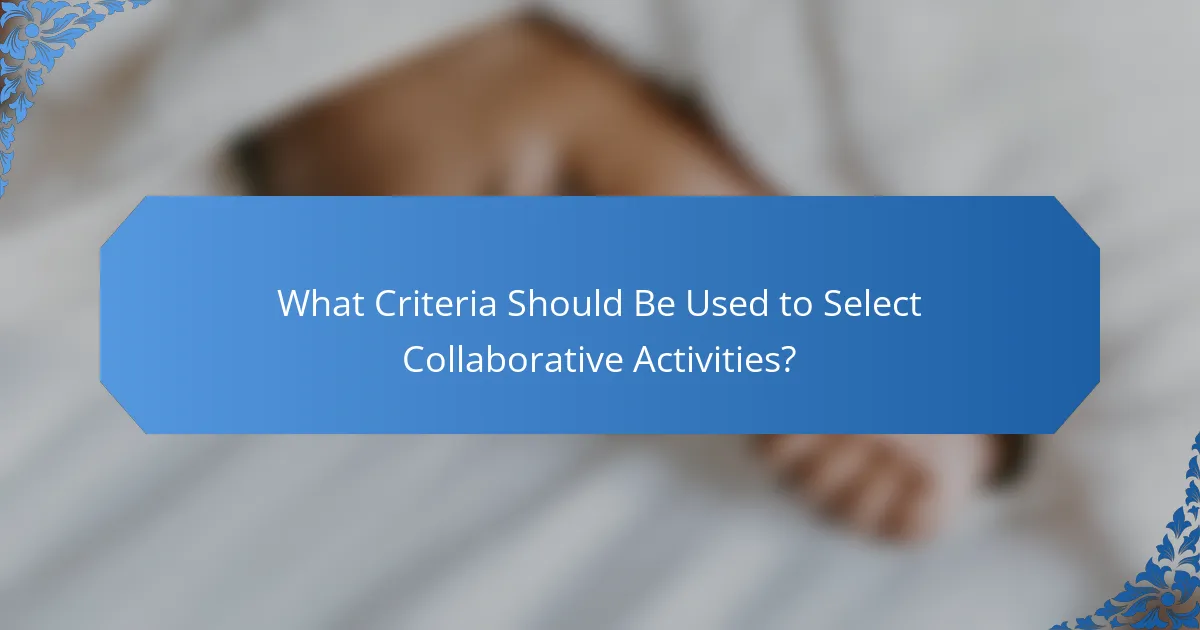
What Criteria Should Be Used to Select Collaborative Activities?
When selecting collaborative activities for math, consider criteria that enhance engagement, support learning objectives, and fit the group dynamics. Effective activities should promote interaction, foster critical thinking, and be feasible with available resources.
Learning Objectives Alignment
Ensure that the collaborative activities align with specific learning objectives. This means selecting tasks that directly support the skills and concepts you want students to master, such as problem-solving or mathematical reasoning. For example, if the goal is to enhance understanding of fractions, choose activities that require students to work together on fraction-related problems.
Regularly review and adjust activities to maintain alignment with curriculum standards, such as the Common Core State Standards in the U.S. This ensures that collaborative work remains relevant and effective in achieving desired educational outcomes.
Group Size Considerations
Group size plays a crucial role in the effectiveness of collaborative activities. Smaller groups, typically 3-5 students, can facilitate deeper discussions and more equitable participation. Larger groups may lead to disengagement or dominance by a few individuals, which can hinder the collaborative process.
Consider the complexity of the task when determining group size. For intricate problems, smaller groups may be more beneficial, while simpler tasks can be effectively managed by larger teams. Monitor group dynamics to ensure all voices are heard and valued.
Resource Availability
Assess the resources available for collaborative activities, including materials, technology, and time. Ensure that students have access to necessary tools, such as calculators or manipulatives, to support their collaborative efforts. Limited resources can restrict the types of activities you can implement.
Plan activities that fit within the constraints of your classroom environment. For example, if technology is limited, focus on hands-on activities that require minimal supplies. Always have a backup plan in case of unexpected resource shortages to maintain engagement and learning continuity.

How Can Technology Facilitate Collaborative Learning in Math?
Technology enhances collaborative learning in math by providing tools that enable communication, interaction, and shared problem-solving among students. These resources foster a more engaging and effective learning environment, allowing students to work together regardless of their physical location.
Online Collaboration Tools
Online collaboration tools, such as Google Workspace and Microsoft Teams, allow students to work together on math projects in real-time. These platforms support document sharing, chat functions, and video conferencing, which can help students discuss concepts and solve problems collectively.
When selecting online collaboration tools, consider user-friendliness and accessibility. Ensure that all students can easily navigate the platform and that it works well on various devices. A checklist for effective use includes setting clear objectives, assigning roles, and establishing communication norms.
Interactive Math Software
Interactive math software, like GeoGebra or Desmos, provides dynamic environments where students can explore mathematical concepts visually. These tools allow for hands-on experimentation with graphs, equations, and geometric figures, facilitating deeper understanding through exploration and manipulation.
To maximize the benefits of interactive software, incorporate guided activities that encourage students to collaborate on problem-solving tasks. For example, assign group projects that require students to create and analyze graphs together, promoting discussion and teamwork.
Virtual Whiteboards
Virtual whiteboards, such as Miro or Jamboard, enable students to brainstorm and visualize their ideas collaboratively. These platforms allow users to draw, write, and share mathematical concepts in a shared space, making it easier to illustrate problems and solutions collectively.
When using virtual whiteboards, encourage students to document their thought processes visually. This can help clarify their reasoning and facilitate peer feedback. A good practice is to set time limits for brainstorming sessions to keep discussions focused and productive.
